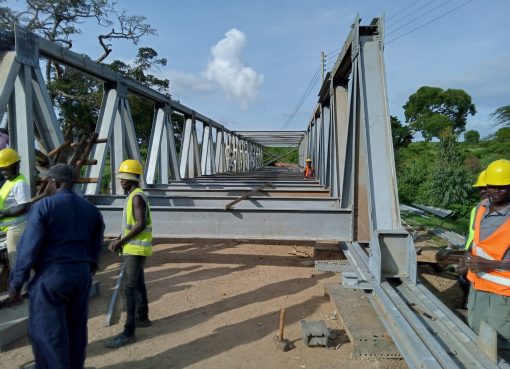The government plans to undertake the first ever Tsavo Ecosystem Restoration Project that will entail intensive reforestation and rehabilitation of water sources to mitigate against the adverse impacts of climate change threatening the survival of one of the most critical ecosystems in Africa.
Tsavo Ecosystem restoration will jointly be undertaken by stakeholders from several ministries including Ministry of Environment, Water, Tourism and Wildlife and Livestock. It will also bring on board conservation players from the private sector.
Last week, a high-powered delegation of Principal Secretaries (PSs) from various ministries toured the Tsavo National Park to familiarise with the multiple challenges facing the biggest ecosystem in Kenya.
Present were Dr Chris Kiptoo, PS Environment and Forestry; Harry Kimutai for Livestock; Prof Fred Segor, for Wildlife and Kassim Farah for Fisheries and Blue Economy.
The team conducted aerial surveillance along several areas including the Voi River, Taita Hills and Chyullu Hills to assess the extent of degradation, deforestation and levels of siltation.
They also toured Standard Gauge Railway (SGR) underpasses to check on illegal settlements in migration corridors that were disrupting wildlife movement.
The team said that the government would bring together a team of stakeholders to draft a comprehensive integrated master plan for rehabilitation, regeneration and protection of Tsavo Ecosystem.
“This master-plan will be the roadmap to guide the process of rehabilitating Tsavo Ecosystem,” said Dr Kiptoo.
The envisaged plan will also include a community-empowerment component by focusing on maximisation in utilisation of resources to benefit local communities. Other factors to be factored in the programme include fire hazards, encroachment of protected areas, human-wildlife conflict and enhancing the benefits from ranching activities.
Tsavo Restoration Project is viewed as the most concrete step towards shielding the critical ecosystem from looming degradation. In the recent past, there have been concerns over the fate of Tsavo in view of several emergent challenges confronting the park.
While the threat of poaching had largely been contained, other dangers have emerged calling for a change in tact in tackling such threats. Amongst the most prominent dangers include widespread loss of vegetation due to prolonged droughts, menace of illegal herders who sneak to graze in the park, small-game poaching and general loss of habitat.
Another major threat is the rapid decline in the water levels of Mzima Springs in Tsavo West National Park. The drop is attributed to wanton degradation of Chyullu Hills by human activities. Mzima springs is fed from Chyullu.
With the increase in population of wildlife in Tsavo, calls to secure this crucial national resource have been mounting. The 2021 wildlife census indicates that the general population of wildlife in Tsavo has gone up.
The prolonged drought and resultant loss of habitat in the park has also been cited as a factor in pushing wildlife to stray from protected areas leading to rising cases of human-wildlife conflict.
Residents supporting the efforts have expressed optimism that it will both provide employment for local youth and at the same time address the chronic issues of conflict between wildlife and villages bordering Tsavo.
Mr Patric Mwambi, a farmer in Ngolia, says the government should consider buying tree seedlings from local youth groups and utilising them as labour for reforestation activities.
“The government can buy seedlings and also employ the youth to plant them inside the protected area,” he said.
Stakeholders have also called for allocation of monies to conserve the water towers that feed most streams and dams in Tsavo.
Mr Zacheus Maganga, a local official of Water Resource Users Association (WRUA) says conservation programme should extend to preservation of sources of water.
He added that Voi River which was the major source of water for the famous Aruba Dam in Tsavo East National Park had become dilapidated because the source at Taita Hills had been neglected.
“This restoration can also extend to the water towers to ensure sustainability of the project,” Maganga said.
By Wagema Mwangi





